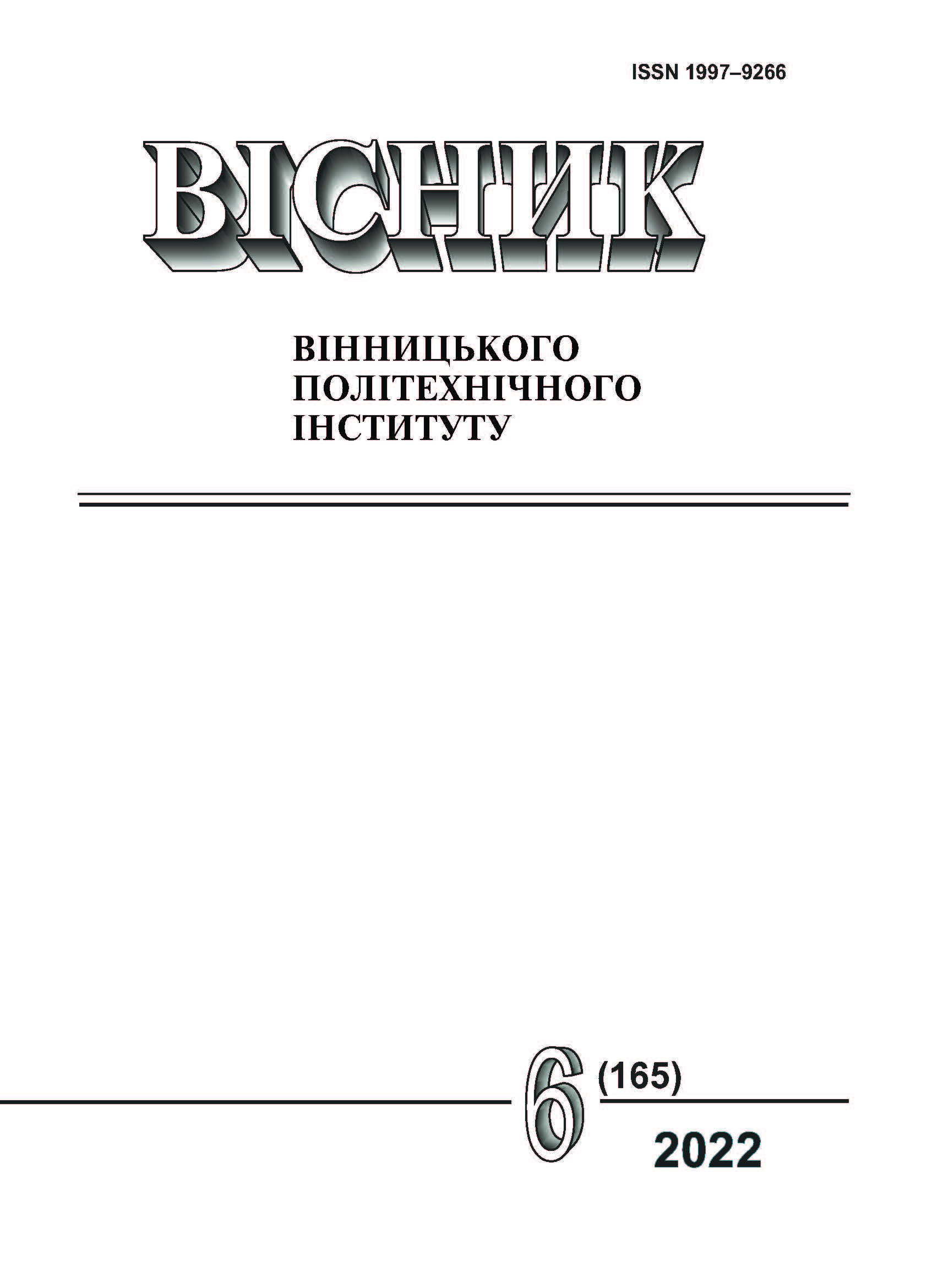Prospects for the Use of Solar Energy for Energy Supply in the City of Odesa
DOI:
https://doi.org/10.31649/1997-9266-2022-165-6-29-36Keywords:
solar radiation, solar panel, solar collector, energy generation, hybrid solar collector, efficiency of use, thermal energy, electric energyAbstract
This article considers the possibilities of using solar energy for energy supply of residential and communal facilities in the winter period of the year. The efficiency and, as a result, the amount of received energy depends on the intensity of solar radiation per unit area, therefore, to evaluate the prospects for the use of solar energy, modeling of the intensity of solar radiation throughout the year and in particular during the heating period was carried out. When modeling solar radiation, three components of radiation falling on an inclined surface were taken into account, namely: direct, diffuse and reflected components. In the calculations of all components, the indicators that can affect the intensity of insolation were taken into account as much as possible, and the obtained radiation results were compared with the models of other researchers, and showed sufficient adequacy of the obtained values. In order to maximize solar radiation, the optimal angle of the surface was selected, as a result of which the angle of the irradiated surface was chosen to be 50º, but this angle of installation of the surface reduces the amount of solar radiation reaching the surface in the summer. For the summer period, the optimal angle is 15…20 °, but since the purpose of the work was to study the efficiency of solar installations in the winter period, an angle of 50º was used for evaluation. Three types of devices were considered as solar installations: solar collector, solar photovoltaic panel and hybrid solar collector. Two types of hybrid solar collectors were considered: with a predominant orientation on the generation of electrical energy and with an orientation on thermal energy. According to the results of the assessment of the amount of energy obtained, the most effective are hybrid collectors with an orientation to thermal energy, which on average allows to obtain 30 % more energy than other solar installations.
References
H. P. Garg, and Goura Datta, “Solar radiation. Fundamentals and characteristics of solar radiation,” Renewable Energy, vol. 3, no. 4/5, pp. 305-319, 1993.
Б. И. Басок, Б. В. Давыденко, В. Г. Новиков, и Р. Я. Сороковой, «Моделирование солнечного излучения для использования в возобновляемой энергетике и в строительной теплофизике,» Промислова теплотехніка, № 1, с. 44-50, 2018.
В. А. Шакиров, «Методика оценки прихода суммарной солнечной радиации на наклонные поверхности с использованием многолетних архивов метеорологических данных,» Системы методы технологии, № 4 (36), с. 115-121, 2017.
Г. Ф. Прихотько, А. В. Ткаченко, и В. Н. Бабиченко, Климат Украины. Ленинград: Гидрометеорологическое издательство Ленинград, 1967.
Н. И Слипченко, «Экспериментальные исследования характеристик солнечной панели kV 150/24(12) в зимних условиях,» Вестник ХПИ, № 24, с. 86-92, 2011.
Е. В. Кравченко, В. П. Кравченко, и Е. Н. Ткачева, «Определение оптимального угла наклона солнечного коллектора в зависимости от длительности работы в течение года,» Холодильна техніка та технологія, № 52 (1), с. 35-41, 2016
В. Ф. Гершкович, Энергосберегающие системы жилых зданий, пособие по проектированию, ч. 6, 2006, 55 с.
Б. И. Назаров, М. А. Салиев, А. Н. Махмудов, и С. Ф. Абдуллаев, «Расчёт потока суммарной радиации на наклонную плоскость солнечных приёмников в условиях аэрозольного загрязнения атмосферы,» Доклады академии наук республики Таджикистан, № 12, 2015.
Метеопост. Клімат Одеси (кліматична норма). [Електронний ресурс]. Режим доступу: https://meteopost.com/weather/climate-normals/odessa/. Дата звернення: Лист. 10, 2022.
Комунальне підприємство «Теплопостачання міста Одеси,» [Електронний ресурс]. Режим доступу: https://www.teplo.od.ua/2022/09/27/tarifi-2022/ . Дата звернення: Лист. 10, 2022.
Я. А. Кулик, «Розробка системи стеження за рухом сонця для підвищення ККД сонячних електростанцій,» Вісник Національного технічного університету ХПІ. Серія: Механіко-технологічні системи та комплекси № 20, с. 19-24, 2017.
Климат и средняя погода круглый год в Одессе. [Электронный ресурс]. Режим доступа: https://bit.ly/3GtncT4 . Дата обращения: Лист. 10, 2022.
М. Ю. Шабовта, і В. О. Разінков, «Оцінка енергетичних, температурних та економічних характеристик гібридних колекторів,» Електротехнічні та комп’ютерні системи, № 36 (112), 2022.
Downloads
-
PDF (Українська)
Downloads: 185
Published
How to Cite
Issue
Section
License

This work is licensed under a Creative Commons Attribution 4.0 International License.
Authors who publish with this journal agree to the following terms:
- Authors retain copyright and grant the journal right of first publication.
- Authors are able to enter into separate, additional contractual arrangements for the non-exclusive distribution of the journal's published version of the work (e.g., post it to an institutional repository or publish it in a book), with an acknowledgment of its initial publication in this journal.
- Authors are permitted and encouraged to post their work online (e.g., in institutional repositories or on their website) prior to and during the submission process, as it can lead to productive exchanges, as well as earlier and greater citation of published work (See The Effect of Open Access).





